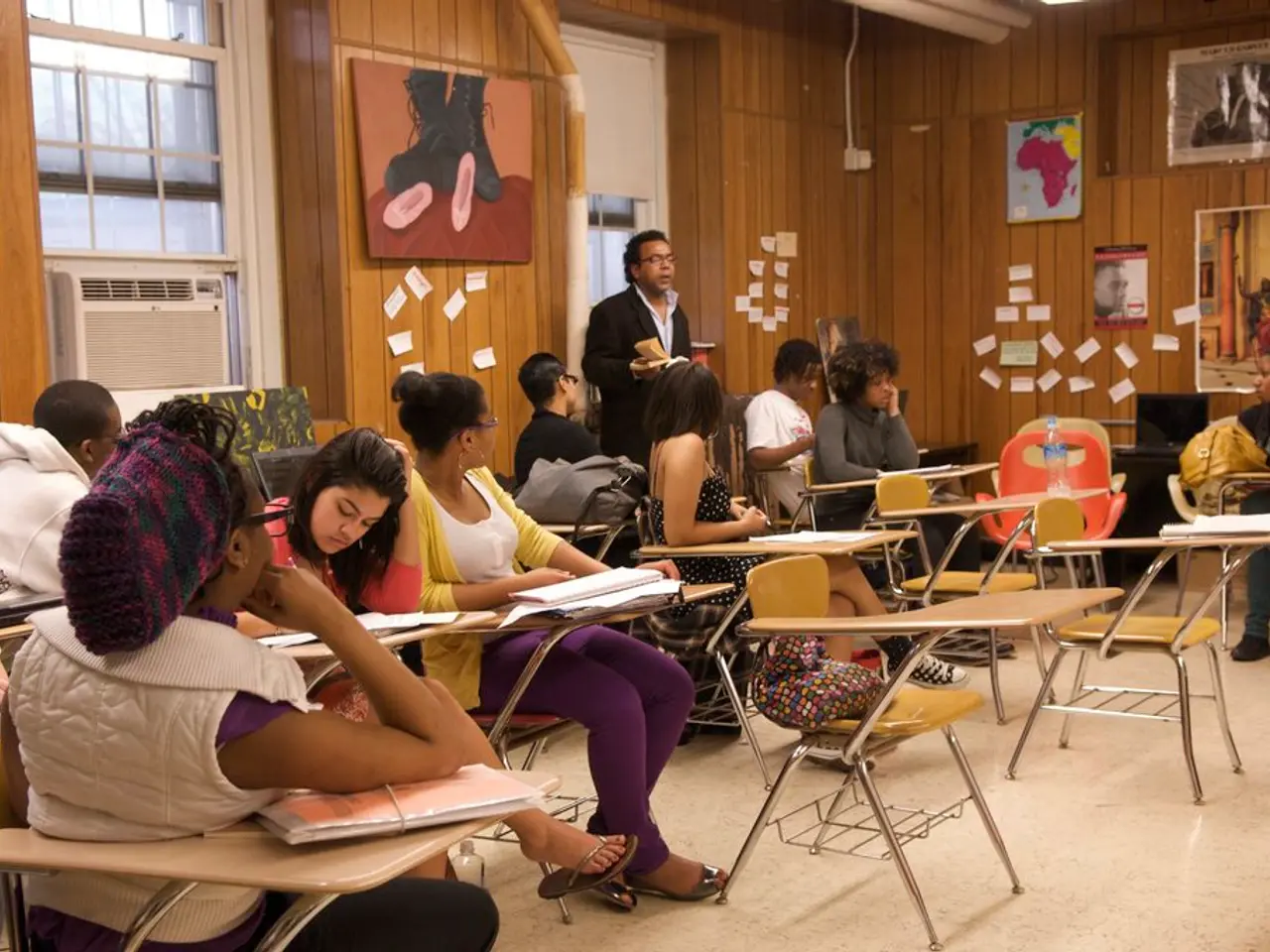Developing Capabilities through Collaborative On-the-Job Training
In modern education, participatory professional development (PPD) is revolutionizing the way educators learn and grow. This approach emphasizes collaboration, active involvement, and shared learning among educators, creating a more dynamic and inclusive educational environment.
PPD models prominently feature Professional Learning Communities (PLCs), Project-Based Learning (PBL), and digital professional development integrated with collaborative frameworks. These models foster collaboration among educators, reflective practice, and continuous improvement aligned with student data and equity goals.
Professional Learning Communities (PLCs)
At the heart of PPD are Professional Learning Communities (PLCs), where teachers work collaboratively across grade levels and content areas. PLCs encourage inquiry-oriented approaches, allowing teachers to identify issues and research new strategies, while maintaining results-oriented approaches that align teaching to essential standards for student learning. Effective PLCs lead to increased job satisfaction and improved student outcomes, although challenges remain in shifting from isolated to shared responsibility models.
Project-Based Learning (PBL)
Project-Based Learning (PBL) engages educators and students in hands-on, real-world projects that foster critical thinking, creativity, and communication skills. PBL encourages participatory learning environments beneficial for both student and teacher growth. By connecting classroom learning with community issues, PBL enhances student ownership and practical application of knowledge.
Digital Professional Development and Virtual PLCs
The integration of technology in PPD expands its reach and allows for personalized learning journeys, accommodating various professional needs and preferences. Programs focused on building teachers' digital competencies empower them to create interactive lessons and adapt to technological change. Virtual PLCs extend collaboration beyond physical schools, allowing educators across locations to share best practices and problem-solve collectively. This increases accessibility and inclusivity in participatory professional development.
Continuum of Teaching Practice Framework
The Continuum of Teaching Practice Framework outlines five levels of teacher professional development, from emerging awareness to innovating leadership. It models participatory professional growth as a graduated process culminating in teacher leadership within their professional communities.
Future Directions for Participatory Professional Development
Future directions for PPD include fostering collaborative learning environments that prioritize inclusivity, utilizing emerging technologies like VR and AI, and aligning training programs with educational standards and methodologies. Cooperative networks among educational institutions, community organizations, and professionals will likely be a hallmark of future PPD strategies, fostering sustainable growth and continuous improvement for educators in various contexts.
Success stories illustrating the impact of participatory professional development include secondary schools employing the extended PLC model, schools with consistent digital professional development initiatives, and classrooms embedding PBL. These examples demonstrate tangible outcomes such as improved instructional techniques, increased student engagement, and enhanced educational quality.
Evaluating the impact of PPD involves assessing changes in teaching practices, student engagement, and overall educational performance using tools such as surveys, focus groups, and classroom observations. Strategies for implementing PPD include organizing regular workshops, integrating technology, and providing sustained support after initial training.
In summary, modern successful PPD models center on collaborative learning communities, project-based initiatives, digital competency development, and structured reflective growth frameworks, all aimed at empowering teachers to improve student learning inclusively and sustainably. Challenges such as aligning schedules, overcoming isolated teaching cultures, and sustaining commitment require intentional leadership and shared vision to overcome.
[1] DuFour, R., DuFour, R., Eaker, J., & Many, T. (2010). Learning by Doing: A Handbook for Professional Learning Communities at Work. ASCD.
[2] Hmelo-Silver, C. E., & Barrows, H. S. (2012). Project-based learning: Design, research, and practice. Routledge.
[3] Stoll, L., & Louis, K. S. (2010). The continuum of teaching practice: A framework for understanding and improving instruction. Harvard Education Press.
[4] Darling-Hammond, L. (2017). The right to learn: A blueprint for creating and maintaining high-quality schools. Teachers College Press.
[5] Louis, K. S., & Kruse, J. (2010). The impact of professional learning communities on student achievement: A synthesis of research findings. ASCD.
- A key element in professional development, as part of education-and-self-development, involves Professional Learning Communities (PLCs), where educators collaborate to develop new strategies and improve teaching methods, promoting personal-growth and career-development.
- Technology integration in professional development, such as e-learning programs and virtual PLCs, not only extends collaboration beyond physical schools but also provides personalized learning experiences, thereby improving learning and skills-training.
- Participatory professional development, through initiatives like Project-Based Learning (PBL), focuses on enhancing educators' success, as well as their students', by fostering critical thinking, creativity, and communication skills, thereby contributing to their overall professional development.




